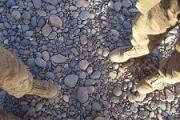The flagship for the war on terror could well be the US Navy ship Mercy. But this Navy vessel is not armed for battle. Just the opposite: It is fitted for peace.
The Mercy is a fully equipped, 1,000-bed floating hospital, which returned in September from giving medical care and training to the people of Indonesia, Bangladesh, East Timor, and the Philippines. The US Navy, Project HOPE, and other volunteer medical personnel provided free medical care, including major surgeries, for nearly 61,000 needy patients.
Amid the uncertainty about the best strategy in Iraq and how to answer the growing threat of terrorism and extremism in the world, there is one American policy of the past two years that has proven successful time and again: humanitarian missions by the US military. This policy is pro-military, pro-American, pro-humanitarian, and antiterrorist. Most important, it is actually curbing anti-American feelings in Muslim countries...












Bookmarks